#Brownheaded Cowbird
Text
Another ice storm today,
but the spring migrants keep coming. Here's a very weather-battled Cowbird.
Let's hope the power lines stay put!

#birds#backyard birds#Brownheaded Cowbird#cowbirds#ice storm#birds of Michigan#birds of north america#pure Michigan#birdwatching#birdlovers#nature#spring migration#Ostdrossel#birdphoto
196 notes
·
View notes
Photo

Oil fields are are brining brown-headed cowbirds and th... - https://goo.gl/jtbQmy - #Brining, #Brownheaded, #Cowbirds, #Fields, #Oil, #TopStories
0 notes
Photo


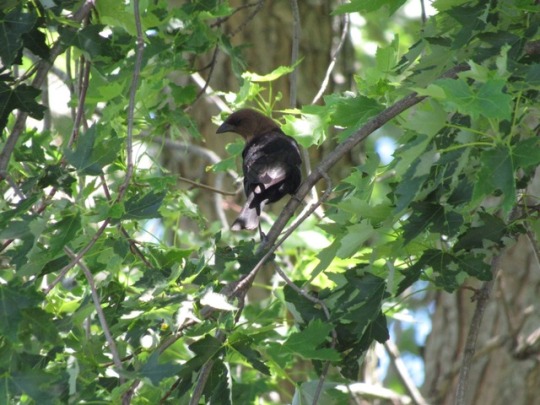
Brown Headed Cowbird(s) and a Grackle
#brownheaded#cowbird#grackles#perching#trees#bird#birds#backyardbirds#birdfeeder#birdphotography#birdwatching#nature#outdoor#photography
0 notes
Text
Teen birds can be
very confusing, especially when you are just starting with birdwatching. They have the coolest patterns and colorations going on, and I have to say they are one of my favorites to see. It is fantastic that it is possible to see them even into fall. The calendar birds for August, September and October are teens. There’s a Rubythroated Hummingbird with just the first parts of the gorget appearing, a juvenile Cowbird morphing into adult plumage, and a teen Cardinal, still with lots of baby feathers and the characteristic brown beak.

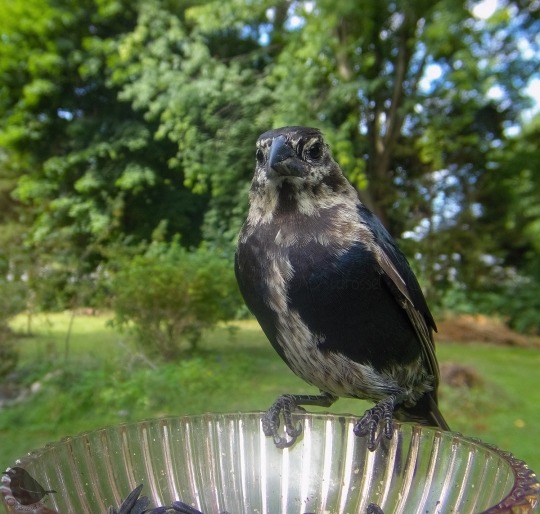

#birds#backyard birds#Rubythroated Hummingbird#hummingbird#kolibri#Brownheaded Cowbird#cowbirds#Northern Cardinal#Cardinals#King of the yard#birds of Michigan#birds of north america#birdwatching#birdlovers#nature#bird calendar#Ostdrossel#birdphotography
238 notes
·
View notes
Text
At this time of the year,
you might see birds that look a bit scary, rugged, even sick or somewhat familiar and you just cannot put your finger on what species they belong to. This means we are in the middle of molting season. Molting means either an adult bird loses older feathers and grows new ones or a juvenile bird is growing the first adult plumage. I love this time of the year because you get to study bird anatomy a bit and you might see some spectacular patterns, textures and color combos. Here are two examples of juvies changing to adult feathers (Cowbird and Starling) and two for adult molts (Blue Jay and Grackle). They will all look smooth again in a bit.
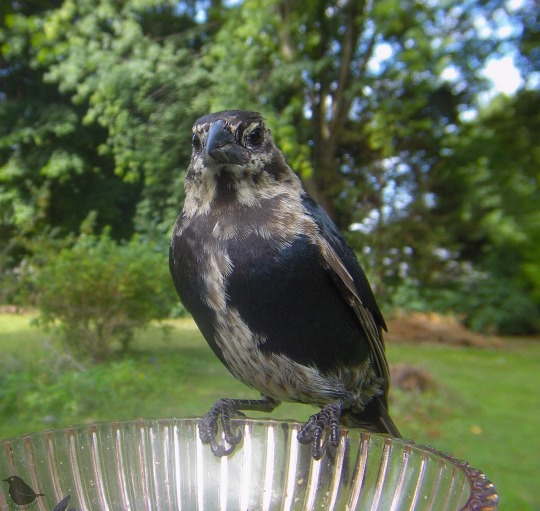
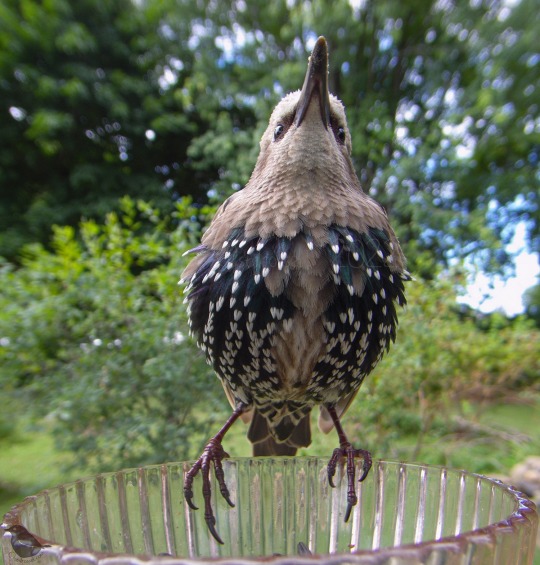
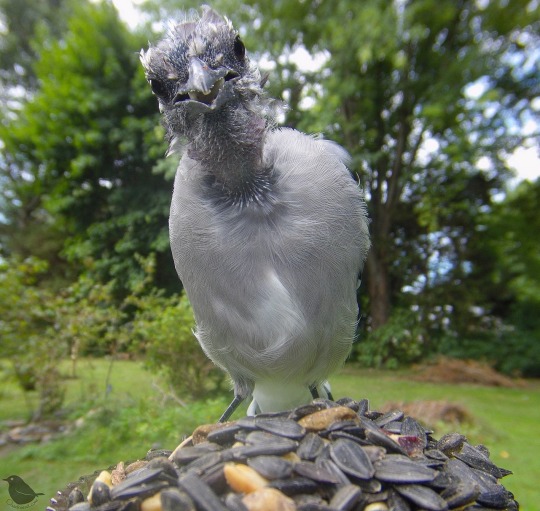
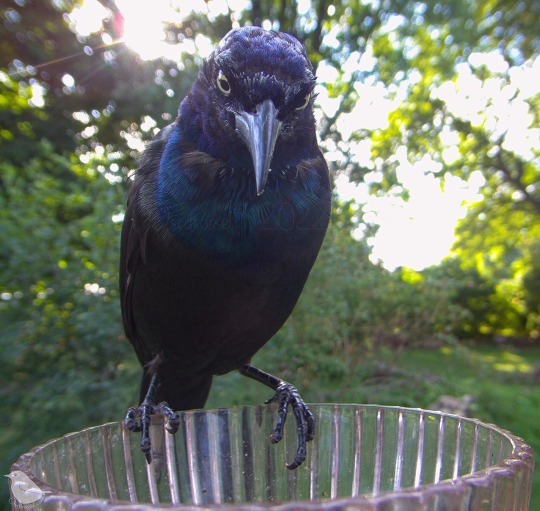
#birds#backyard birds#molting season#Brownheaded Cowbird#European Starling#starling#Sturnus vulgaris#Blue Jay#corvids#Common Grackle#Count Grackula#birds of Michigan#birds of north america#birdwatching#birdlovers#nature#Ostdrossel#birdphotography
213 notes
·
View notes
Text
The molting continues.
There are still flocks of adventurous looking Cowbirds passing through, along with Grackles and Starlings. Many of the Blue Jays are also still looking rather rough, but the weather is nice enough so they will not be cold. The Goldfinches have come back, bringing their adorable and excited youngsters, and they are beginning to molt into their winter feathers. The resident Cardi family also has made it through the summer fine, they have at least two young ones but except for this female, they are all camera shy. Hopefully in the coming weeks I can get one of the babies to check a camera out. Come good into Saturday!
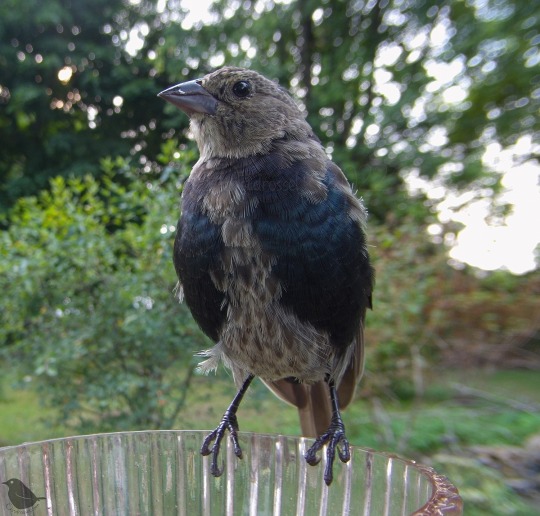


#birds#backyard birds#Brownheaded Cowbird#cowbirds#American Goldfinch#Goldfinch#Northern Cardinal#Cardi#Queen of the yard#molting season#birds of Michigan#birds of north america#birdwatching#birdlovers#nature#Ostdrossel#birdphotography#Saturday vibes
168 notes
·
View notes
Text
There is really no bird
that I see more often misidentified than this one, and I had my issues in the beginning too. All of these are the same species a Brownheaded Cowbird. The first two are youngsters. A juvenile that is morphing into adult feathers, a stage that I love, it looks so cool because they all have different markings. The one next to it is a baby, and I was a little surprised to see that yesterday, so late in the season. The pink edges of the beak, the speckled brown feathers and the cute appearance are tells. The other two are adults - a female and a male. They get a bad reputation but are fascinating native birds and do not act out of malice. If you are interested to learn more about them, Audubon has a great article about them here.

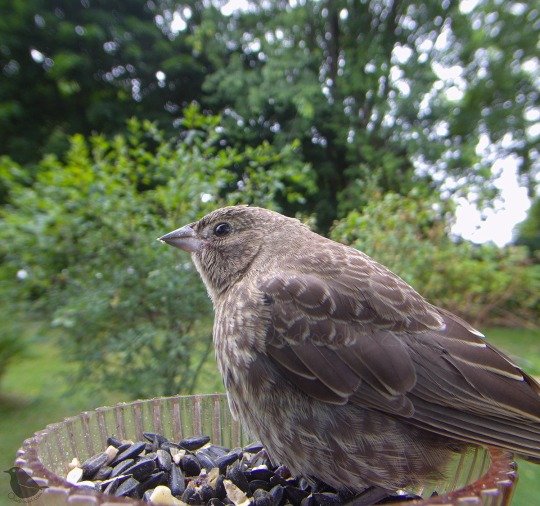
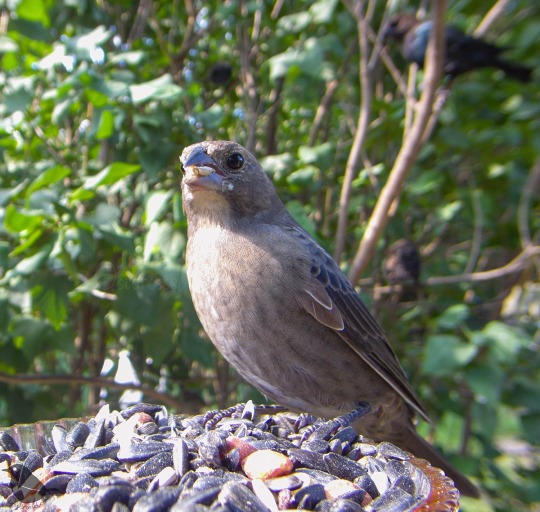

#birds#backyard birds#Brownheaded Cowbird#cowbirds#birds of Michigan#bird identification#birds of north america#birdwatching#birdlovers#nature#Ostdrossel#birdphotography
132 notes
·
View notes
Text
I put a little station
with nesting material on the chestnut tree to see if anybody would take some. Activity has been low on this camera, but the other day I saw something interesting. A female Cowbird came to inspect the material. She must have thought it was a nest. Brownheaded Cowbirds are so-called brood parasites. They lay their eggs in other birds’ nests and let them raise their young. Later in the season, the whole family will flock and migrate together. This was recorded with one of my Birdsy cameras. They are having a Memorial Day Sale right now, go and check it out at birdsy.com.
#birds#backyard birds#brown headed cowbird#cowbird#birds of michigan#birds of north america#birdlovers#nature#birdphotography#birdwatching#Birdsy#ostdrossel
83 notes
·
View notes
Text
During migration time
it is always fun to see the “winter world” clash with the “summer world”. Yesterday and today we have snow, but migration has started, and so they mingle. A flock of Cowbirds passed through the other day (the first photo shows a female), and the Juncos are still here, enjoying the snow and filling their bellies for the big trip up north. On Thursday, we are expecting truly springlike temperatures, and i have to say I am more than ready to say goodbye to winter for now. Gayle and Mr. Business will also have a much easier time to raise their babies (they are due to hatch on / around the 24th.)
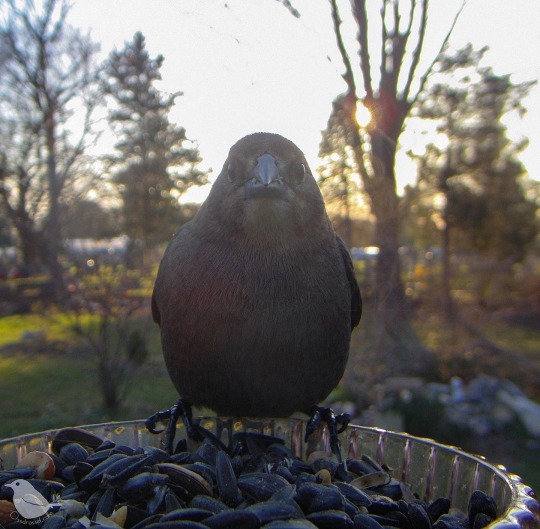

#birds#backyard birds#Brownheaded Cowbird#cowbirds#Darkeyed Junco#Juncos#spring migration#birds of Michigan#pure Michigan#birds of north america#birdwatching#birdlovers#nature#wildlife#Ostdrossel#birdphotography
95 notes
·
View notes
Text
While the winter crowd
can be a bit boring at times, surprises can happen any day. I think this is part of why I enjoy birdwatching so much. Every day has the possibility of something fun happening. Anyways, yesterday, I had this lone Cowbird lady on the feeder, and I also saw a Redwinged Blackbird. They sometimes travel with Starlings, so it makes sense that they were around. Here’s to a good week with fun surprises!

#birds#backyard birds#Brownheaded Cowbird#Cowbirds#birds of Michigan#birds of north america#birdwatching#birdlovers#nature#surprise visitor#Ostdrossel#birdphotography#Monday vibes
123 notes
·
View notes
Text
Everybody's molting,
and it’s quite the sight to behold. For smaller birds like Chickadees, Titmice and Bluebirds, the molting is also a good ID marker for the adults. The babies usually look all preppy and brandnew at the end of the season. Blue Jays and Grackles look most dramatic. Here we have: young Cowbird, Blue Jay, House Finch, Blue Jay, young Blue Jay and Grack. They all appreciate quality food and water during this time. The feathers will grow back and they will look like new soon again.

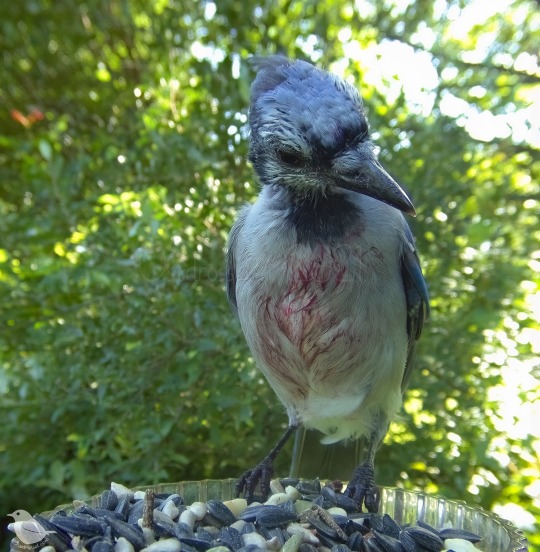



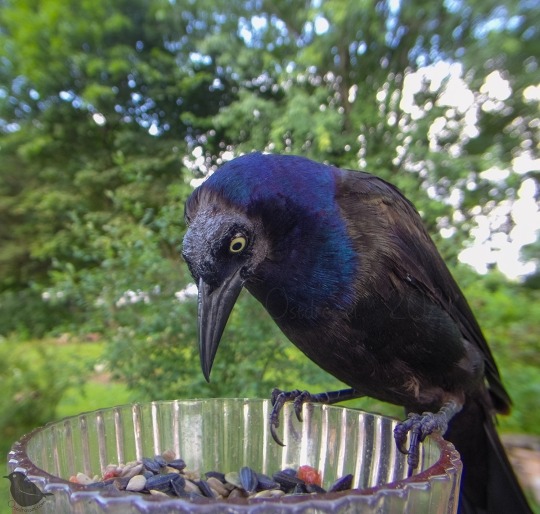
#birds#backyard birds#molting season#Brownheaded Cowbird#cowbirds#Blue Jay#corbids#House Finch#Common Grackle#Count Grackula#birds of Michigan#birds of north america#birdwatching#birdlovers#nature#Ostdrossel#birdphotography
115 notes
·
View notes
Video
The flock came back this morning. My post last night evoked lots of interesting reactions. For the birder on a budget, Starlings can be a bit of a nuisance because of their voraciousness. They will chase other birds away and can be rather aggressive in defending the food (also amongst each other). They are an invasive bird in the US, and can be a threat to native cavity nesters like the Red-bellied Woodpecker, taking over nestboxes and killing the inhabitant. But they are also very clever, impressive and beautiful birds, and none of their behavior is their own fault. As a native European myself, I do feel a connection to them, but I am always glad to only enjoy them in small doses 🙂
#birds#backyard birds#European Starling#Sturnus vulgaris#Brownheaded Cowbird#cowbirds#flock#Hitchcock#birds of Michigan#birds of North America#birdwatching#birdlovers#nature#Birdsy#bird video
426 notes
·
View notes
Text
Snow day today!
The birds came in droves and the day concluded with a gorgeous pink sky. Snow is always a nice backdrop, so I am hoping for a couple more days like this, maybe with some sun?
(Brownheaded Cowbird, Eastern Bluebird, American Goldfinch, Blue Jay, female House Finch)
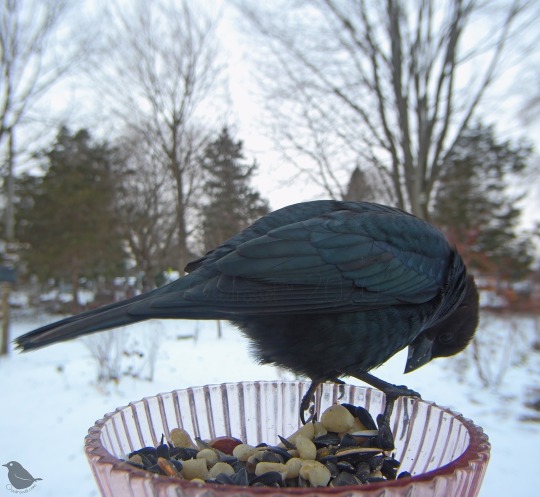

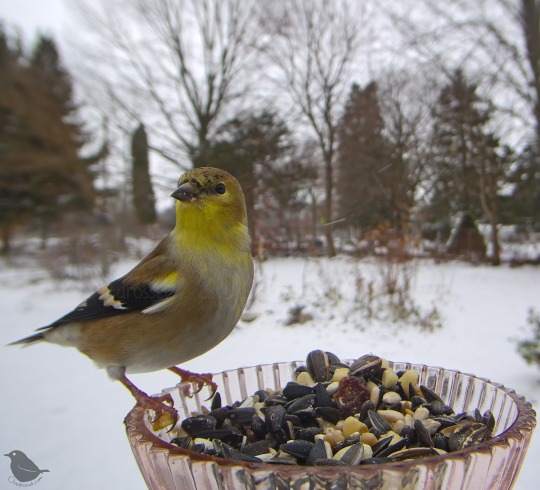



#birds#backyard birds#snow day#birds of Michigan#birds of north america#pure Michigan#pink sky#Brownheaded Cowbird#Eastern Bluebird#American Goldfinch#Blue Jay#House finch#bluelove#corvids#Wednesdayvibes#birdwatching#birdlovers#nature#birdphotography
433 notes
·
View notes
Text
The snow brought in
some unusual visitors - a couple of Brown-headed Cowbirds. The females (here on the left) are one of the hardest birds to identify for a beginner birdwatcher. But if you know what the males look like and compare their overall shape and the beaks, things become more clear.
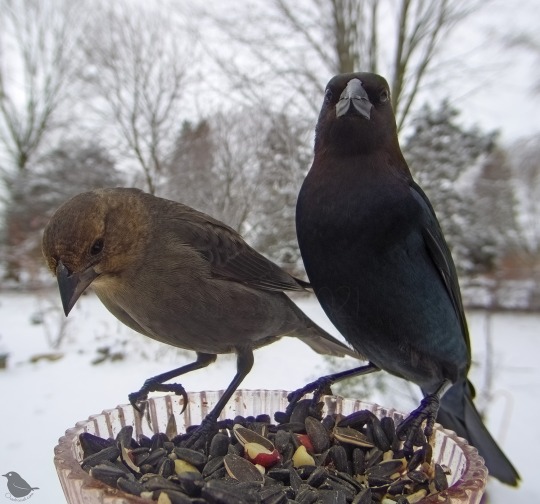

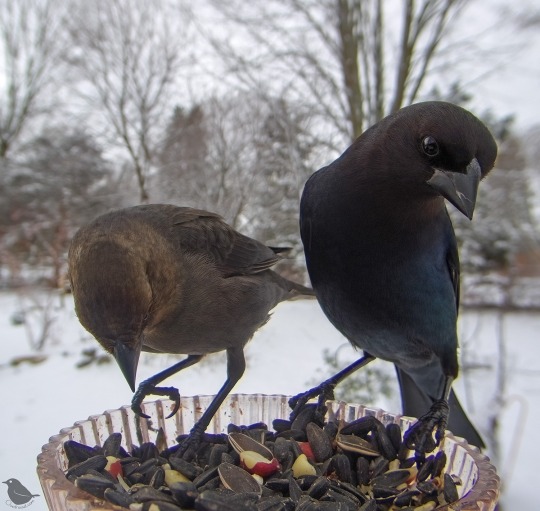
#birds#backyard birds#Brownheaded Cowbird#Cowbirds#birds of Michigan#birds of north america#birdwatching#birdlovers#nature#Ostdrossel#birdphotography
226 notes
·
View notes
Text
Another round of Who's that girl?
Around this time of the year, many people start seeing this kind of bird and wonder what it is. It was certainly one of my “struggle birds” in the beginning, too. However, it is fairly easy - this is a female Brownheaded Cowbird. In size, they are between a Robin and a Cardinal, and they have a soft trilling call. Cowbirds are known and often disliked for their breeding behavior. They are so-called brood parasites, meaning that they lay their eggs into other birds’ nests and let them raise their babies. This is not out of malice. They used to follow cattle around and never stayed anywhere long enough to build nests. This way of breeding ensured their survival as a species. Nowadays, there is less cattle roaming around and humans have taken over lots of habitat. The birds are still the same, and so we might witness one of nature’s oddities in the summer when for example tiny Chipping Sparrows feed one of their own babies but also a ginormous Cowbird baby. The human birdwatcher might feel bad and think about interfering, but remember that Cowbirds are native to the US and protected by law. Read up before you act.

#birds#backyard birds#Brownheaded Cowbird#cowbirds#brood parasite#oddity#birds of Michigan#birds of north america#birdwatching#birdlovers#nature#Ostdrossel#birdphotography
121 notes
·
View notes
Text
Along with the Starlings,
a group of Brownheaded Cowbirds has been coming recently. I am not sure I have seen them so late before, usually they arrive by spring and leave for the winter. Many people don’t like them because of their nesting behavior (they lay eggs in other birds’ nests and let them raise their young ones, often to the disadvantage of the original chicks), but I find them fascinating and also think they have the perfect bird shape.
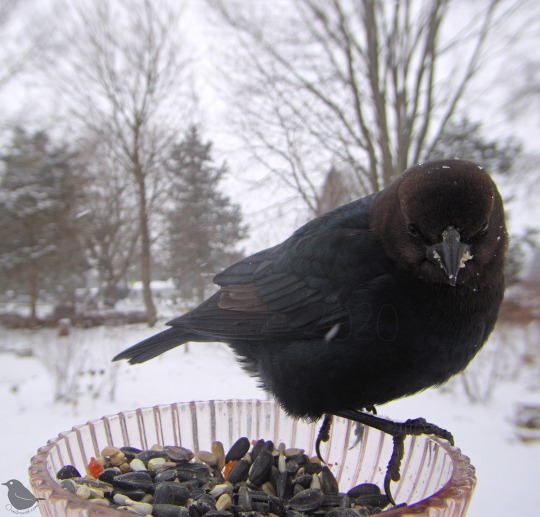

#birds#backyard birds#Brownheaded Cowbird#Cowbirds#birds of Michigan#birds of north america#birdwatching#birdlovers#nature#birdphotography#snow day
178 notes
·
View notes